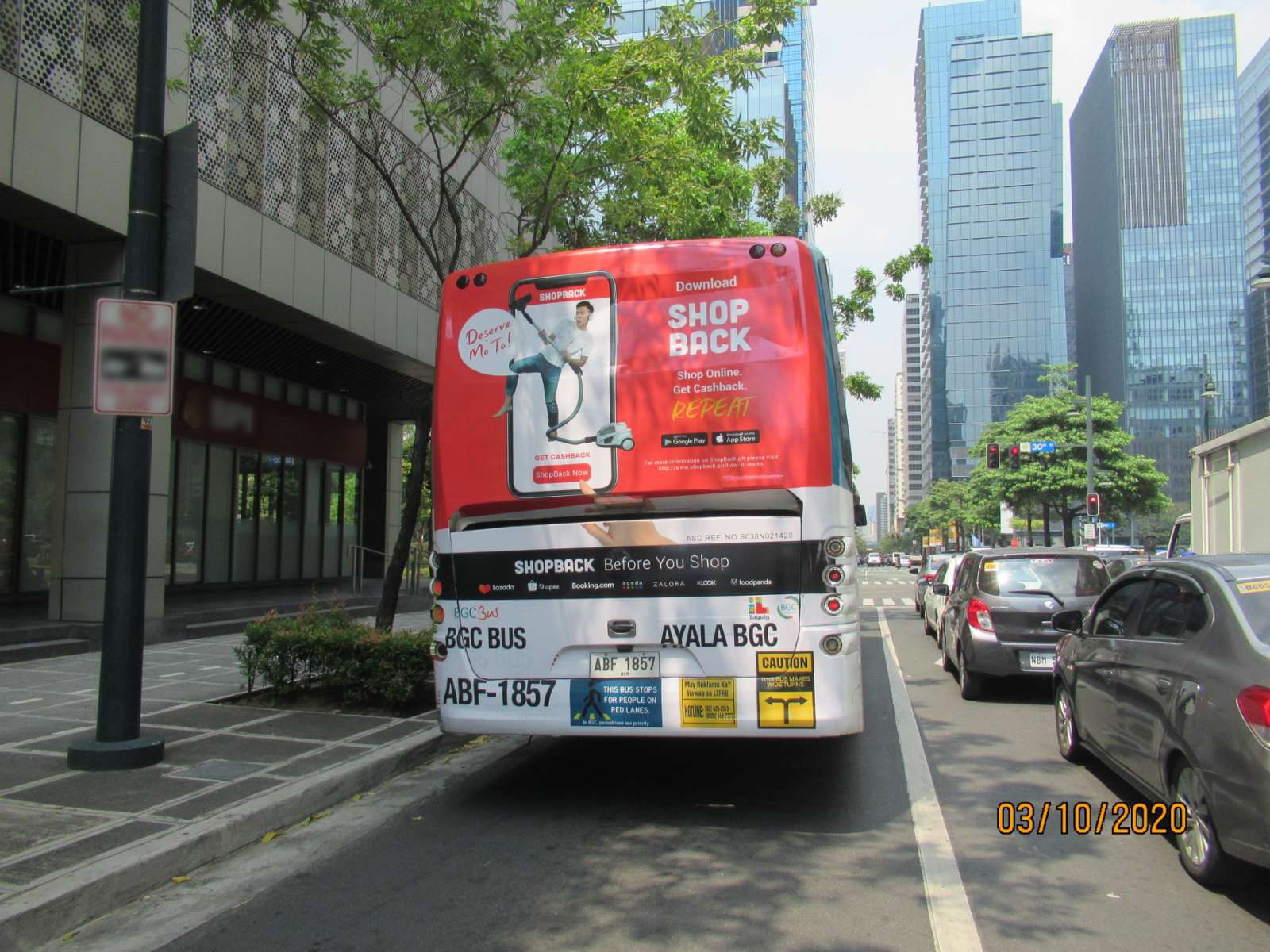Recognizing the Function of Transit Marketing in Enhancing Brand Presence and Consumer Involvement
Transit advertising and marketing has actually emerged as a crucial component in the marketing landscape, providing one-of-a-kind possibilities for brands to elevate their presence and engage consumers properly. With the ability to reach a restricted and diverse audience throughout their daily commutes, these marketing approaches are not merely regarding exposure; they have to do with developing significant links with prospective consumers. As we discover the multifaceted advantages and innovative techniques within transit advertising and marketing, it ends up being necessary to think about just how these elements jointly affect customer understanding and habits, increasing concerns concerning their long-term influence on brand commitment.
Interpretation of Transit Marketing
Transit marketing describes the method of promoting items, solutions, or brands through ads put around public transport systems. This type of advertising includes a variety of placements, including posters on buses and trains, electronic displays at transportation terminals, and covers on the outside of cars. It intends to reach a varied audience, taking advantage of the high foot traffic linked with public transportation.
Transportation advertising is strategically placed to record the attention of commuters, that commonly spend considerable time waiting or taking a trip. By incorporating ads right into the daily regimens of people, brands can develop a lasting impact and foster brand name acknowledgment. The tool is specifically reliable in urban environments, where public transport is a key mode of traveling.
Furthermore, transportation advertising and marketing can promote local targeting, enabling services to reach certain demographics based on transit paths and terminal places. As metropolitan populaces expand and making use of public transportation increases, this marketing approach has actually acquired importance as an important component of incorporated advertising and marketing methods. The vibrant nature of transportation advertising and marketing, integrated with its ability to engage customers in a captive setting, highlights its value in modern advertising methods.
Advantages of Transit Marketing
The effectiveness of transportation advertising and marketing hinges on its capacity to supply a plethora of advantages to brands looking for to enhance exposure and involvement. One of the primary advantages is the substantial reach it provides; transit ads can efficiently target diverse demographics across metropolitan locations, getting to both pedestrians and travelers alike. This wide direct exposure significantly boosts brand awareness.
One more advantage is the high frequency of perceptions. As transit lorries follow established courses and stop at numerous places, they produce recurring direct exposure that enhances brand messages. This frequency promotes knowledge, which is vital in customer decision-making.
Transit advertising is additionally cost-effective compared to other media systems. Provided its large reach and capacity for high impacts, brands typically experience a lower expense per thousand impacts (CPM), maximizing their marketing budget plan.
Additionally, transit ads can create a sense of neighborhood connection. By aligning with local transit systems, brands can resonate with local target markets and foster a sense of regional satisfaction. This localized strategy boosts brand loyalty and interaction, making transportation marketing a compelling choice for businesses intending to strengthen their presence in the market.

Efficient Methods for Transportation Campaigns
To optimize the influence of transportation projects, brands should leverage calculated preparation and execution tailored to their target market. First, identifying the group qualities of the audience using public transit is critical. This allows brands to produce personalized messaging that reverberates with prospective clients.
Next, selecting the best transportation tools is essential. Whether utilizing bus covers, metro posters, or digital displays, each tool has unique benefits that can boost presence. For instance, vibrant visuals on bus covers can draw in attention, while digital ads can be upgraded frequently to mirror prompt promotions.
Additionally, incorporating a natural branding method across transportation platforms ensures uniformity and strengthens the brand's identity. Utilizing distinctive styles and remarkable taglines will certainly strengthen brand recall among commuters.
Lastly, timing is a crucial factor in performing successful transit campaigns. Launching projects throughout height traveling hours or neighborhood occasions can dramatically boost presence and engagement. By utilizing these approaches, brand names can successfully harness the potential of transit advertising and marketing, cultivating greater recognition and connection with their target audience. Eventually, a well-executed transit campaign can drive substantial development in brand name presence and consumer involvement.

Measuring Influence and Involvement
In assessing the efficiency of transit advertising and marketing campaigns, accurate measurement of influence and engagement is crucial for brands seeking to maximize their marketing strategies. Metrics such as reach, frequency, and impressions give foundational information to assess presence. Evaluating these elements aids establish exactly how lots of prospective customers are subjected to the promotions throughout their daily commutes.
Engagement can be additional gauged through consumer communications, such as site web traffic, social networks states, and straight responses to calls-to-action featured in the ads. Utilizing devices like QR codes or distinct Links can facilitate monitoring of customer habits directly linked to transportation campaigns. Studies and responses devices likewise act as useful approaches to gather qualitative information on customer understandings and recall of the advertisement.
Furthermore, progressed analytics and attribution designs can correlate transit exposure with subsequent purchasing actions, supplying insights this into the roi. By using an extensive method that incorporates qualitative and quantitative steps, brands can develop a nuanced understanding of their transportation advertising effect. Ultimately, this data-driven technique allows brands to improve their campaigns, guaranteeing they reverberate properly with target market and improve overall brand presence.
Study of Effective Campaigns
Successful transportation ad campaign offer as engaging examples of exactly how reliable approaches can raise brand exposure and interaction. Transit Advertising Philippines. One remarkable case is the "I Love New york city" campaign, which changed the city's image and attracted countless visitors. By making use of subway ads, signboards, and bus wraps, the campaign created a solid, natural brand identity, causing a considerable uptick in tourism and regional service patronage
One more exemplary campaign is Coca-Cola's "Share a Coke" initiative, which leveraged transit marketing to individualize the brand experience. click now By featuring prominent names on promotional materials throughout different transit systems, Coca-Cola promoted a much deeper emotional connection with consumers, urging them to share their experiences on social networks.
Additionally, the "Got Milk?" project properly used public transportation ads to get to a broad target market, reinforcing the message of the significance of milk in a well balanced diet plan. The project saw a quantifiable boost in milk intake in target demographics.
These situation studies show that when carried out attentively, transportation advertising can substantially enhance brand name exposure, foster customer interaction, and drive quantifiable results, showing its go to these guys vital function in modern-day marketing approaches. - Transit Advertising Philippines
Conclusion
Finally, transit advertising and marketing works as a crucial device for enhancing brand visibility and fostering consumer interaction. By making use of strategically put promotions within public transport systems, brand names can efficiently reinforce and get to diverse audiences acknowledgment through consistent exposure. The implementation of targeted messaging and ingenious methods better intensifies the effect of transit projects. Eventually, the capacity to measure involvement and evaluate successful situation research studies underscores the efficiency of transportation advertising and marketing in driving brand loyalty and consumer interactions.
Transit advertising and marketing has actually emerged as a crucial element in the marketing landscape, supplying one-of-a-kind chances for brands to elevate their presence and engage customers successfully.Furthermore, transit advertising and marketing can promote localized targeting, allowing organizations to get to particular demographics based on transit courses and station areas.In reviewing the efficiency of transit advertising and marketing campaigns, exact measurement of impact and involvement is crucial for brand names seeking to enhance their marketing approaches.Successful transportation marketing campaigns offer as engaging instances of exactly how effective approaches can boost brand name visibility and interaction.In conclusion, transportation advertising offers as an important tool for boosting brand name visibility and promoting customer engagement.